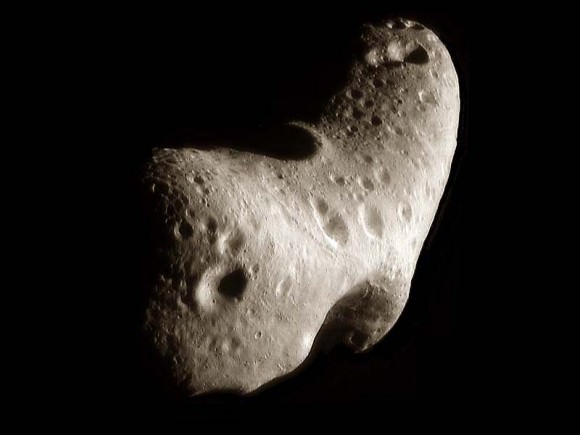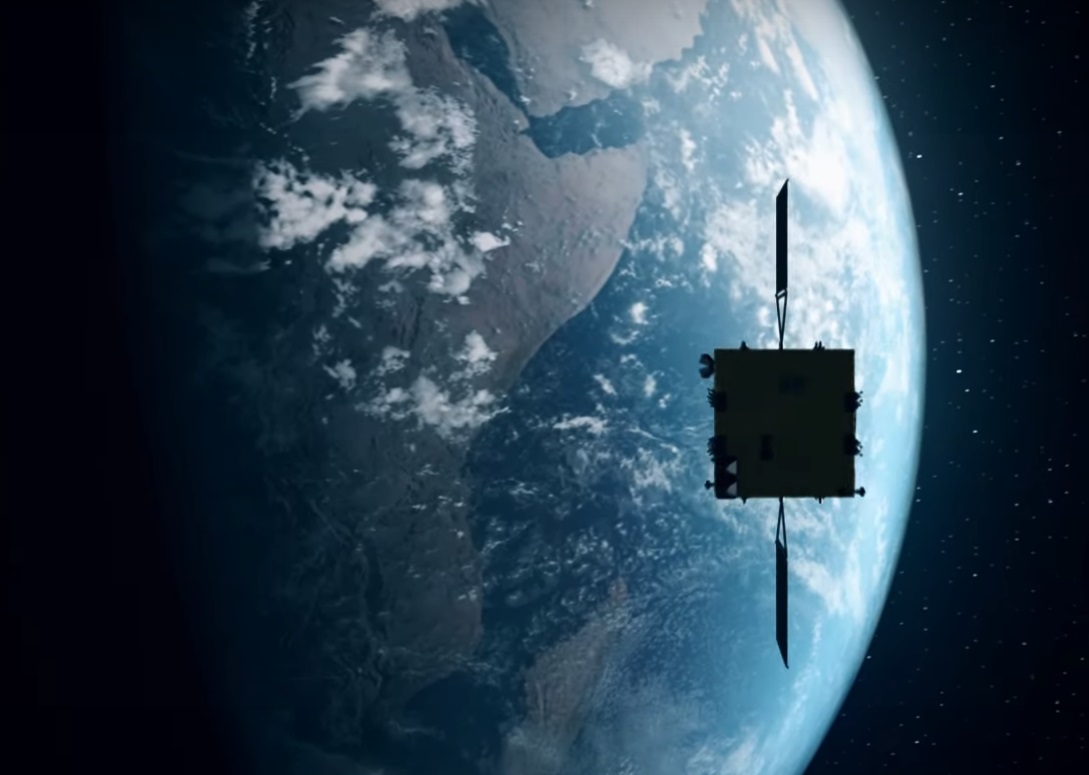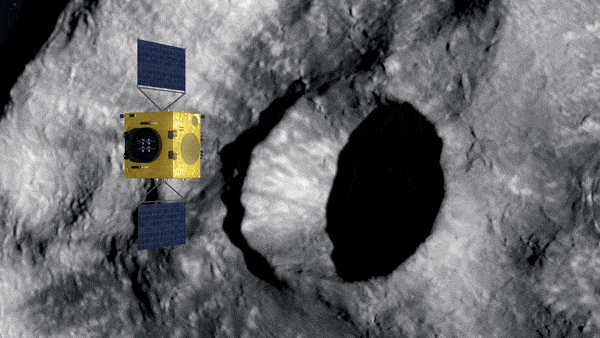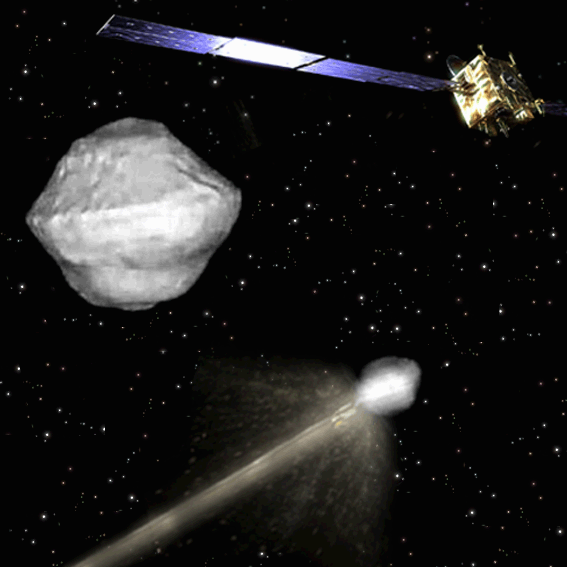The European Space Agency is looking to recruit amateur astronomers to help characterize possible secondary targets for the upcoming Hera asteroid rendezvous mission.
Continue reading “ESA Recruits Amateur Astronomers Ahead of Hera Asteroid Mission”Europe and US are Going to Try and Deflect an Asteroid
Next week, asteroid researchers and spacecraft engineers from all around the world will gather in Rome to discuss the latest in asteroid defense. The three-day International AIDA Workshop, which will run from Sept. 11th to 13th, will focus on the development of the joint NASA-ESA Asteroid Impact Deflection Assessment (AIDA) mission.
The purpose of this two-spacecraft system is to deflect the orbit of one of the bodies that make up the binary asteroid Didymos, which orbits between Earth and Mars. While one spacecraft will collide with a binary Near-Earth Asteroid (NEA), the other will observe the impact and survey the crash site in order to gather as much data as possible about this method of asteroid defense.
Continue reading “Europe and US are Going to Try and Deflect an Asteroid”European Asteroid Smasher Could Bolster Planetary Defense
Planetary Defense is a concept very few people heard of or took seriously – that is until last week’s humongous and totally unexpected meteor explosion over Russia sent millions of frightened residents ducking for cover, followed just hours later by Earth’s uncomfortably close shave with the 45 meter (150 ft) wide asteroid named 2012 DA14.
This ‘Cosmic Coincidence’ of potentially catastrophic space rocks zooming around Earth is a wakeup call that underscores the need to learn much more about the ever present threat from the vast array of unknown celestial debris in close proximity to Earth and get serious about Planetary Defense from asteroid impacts.
The European Space Agency’s (ESA) proposed Asteroid Impact and Deflection Assessment mission, or AIDA, could significantly bolster both our basic knowledge about asteroids in our neighborhood and perhaps even begin testing Planetary Defense concepts and deflection strategies.
After two years of work, research teams from the US and Europe have selected the mission’s target – a so called ‘binary asteroid’ named Didymos – that AIDA will intercept and smash into at about the time of its closest approach to Earth in 2022 when it is just 11 million kilometers away.
“AIDA is not just an asteroid mission, it is also meant as a research platform open to all different mission users,” says Andres Galvez, ESA studies manager.
Asteroid Didymos could provide a great platform for a wide variety of research endeavors because it’s actually a complex two body system with a moon – and they orbit each other. The larger body is roughly 800 meters across, while the smaller one is about 150 meters wide.
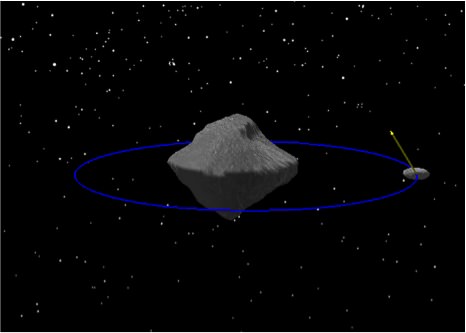
So the smaller body is some 15 times bigger than the Russian meteor and 3 times the size of Asteroid 2012 DA14 which flew just 27,700 km (17,200 mi) above Earth’s surface on Feb. 15, 2013.
The low cost AIDA mission would be comprised of two spacecraft – a mother ship and a collider. Two ships for two targets.
The US collider is named the Double Asteroid Redirection Test, or DART and would smash into the smaller body at about 6.25 km per second. The impact should change the pace at which the objects spin around each other.
ESA’s mothership is named Asteroid Impact Monitor, or AIM, and would carry out a detailed science survey of Didymos both before and after the violent collision.
“The project has value in many areas,” says Andy Cheng, AIDA lead at Johns Hopkins’ Applied Physics Laboratory, “from applied science and exploration to asteroid resource utilisation.” Cheng was a key member of NASA’s NEAR mission that first orbited and later landed on the near Earth Asteroid named Eros back in 2001.
Recall that back in 2005, NASA’s Deep Impact mission successfully lobbed a projectile into Comet Tempel 1 that unleashed a fiery explosion and spewing out vast quantities of material from the comet’s interior, including water and organics.
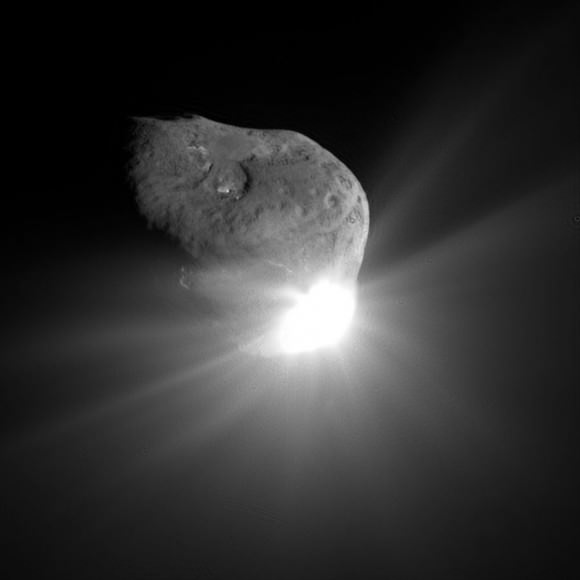
ESA has invited researchers to submit AIDA experiment proposals on a range of ideas including anything that deals with hypervelocity impacts, planetary science, planetary defense, human exploration or innovation in spacecraft operations. The deadline is 15 March.
“It is an exciting opportunity to do world-leading research of all kinds on a problem that is out of this world,” says Stephan Ulamec from the DLR German Aerospace Center. “And it helps us learn how to work together in international missions tackling the asteroid impact hazard.”
The Russian meteor exploded without warning in mid air with a force of nearly 500 kilotons of TNT, the equivalent of about 20–30 times the atomic bombs detonated at Hiroshima and Nagasaki.
Over 1200 people were injured in Russia’s Chelyabinsk region and some 4000 buildings were damaged at a cost exceeding tens of millions of dollars. A ground impact would have decimated cities like New York, Moscow or Beijing with millions likely killed.
ESA’s AIDA mission concept and NASA’s approved Osiris-REx asteroid sample return mission will begin the path to bolster our basic knowledge about asteroids and hopefully inform us on asteroid deflection and Planetary Defense strategies.
